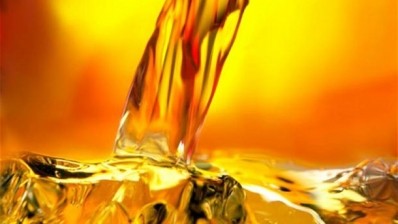Special report
Cheap whiskies haunted by India's new found love of premium spirits

According to Rajesh Grover, marketing manager for Remy Cointreau India, the market consumed 74m cases of the former and 45m cases of the latter, with premium cognac Louis XIII the top seller within his own portfolio.
This was followed by champagne cognac Remy Martin, triple-sec Cointreau, St Remy brandy and Greek spirit Metaxa.
“Piper Heidseck, which we retain the distribution rights to even after its sale, comes sixth in line,” adds Grover.
Current figures are confidential as the company is stock-market listed, but publicly available data states that Remy Cointreau’s Indian market now accounts to around 10% of the company’s global business.
Wine is also becoming a force to reckon with. “According to a recent report, the current size of the total wine market stands at 1.2m,” says Jackie Matai, owner of Aspri Spirits, adding that it is now providing tough competition to whisky with demand on an upswing.
“The industry is growing at a rate of 13% per annum, with an estimated 15% increase in the premium wine segment over the next five years.”
International brand names on the rise
Besides wine, Aspri has chosen to bring international liquor brands, including whisky brands Famous Grouse, Highland Park and MacCallan, the stylish Roberto Cavalli ultra premium vodka, Patron Tequila and elit by Stolichnaya.
“There is also demand for high-end wine brands like Cavalli Tenuta and Degli Dei from Italy, and Maison Albert Bichot and Domaine Barons de Rothschild from France,” Matai says.
A large part of demand is being driven by increased market-awareness among alco-bev companies. After all, few countries are as diverse in their geographical preferences as India.
“We have recognised the need for regional segmentation and initiatives based on this. For instance, India is best known as a whisky market, but this is a north-Indian phenomenon. Brandy is far more popular in South India, and St Remy and Remy Martin have great acceptance there,” says Grover.
He explains that Indians only consume brandy once “they have arrived in life”. This attitude is widely illustrated when wealthy characters in South Indian soap operas reach for the Remy— even without distributors paying for product-placement space.
Status symbols
Brandy is now considered to be a status symbol, which in turn drives demand to the point that the brandy segment has been growing at around 26% each year since 2008. It now constitutes around 34% of the spirits market.
Exposure is by far the biggest influencer of the country’s openness to new spirits and willingness to spend on premium labels. “India has a young population with disposable income. These young people are global in their work, travel and lifestyle. The internet, too, works in favour of experimenting. All of this results in willingness to trying new categories,” Grover adds.
Matai agrees “Those who tend to buy or pick up the high-end brands are the ones who are well travelled and have a flair for quality over price.”
Moreover, once they’re on the experimental track, premium labels have a sure-shot at takers. “Our iconic brands are at higher price points, but discerning consumers and those who have begun the journey of discovery do not shy away from consumption, which in our opinion is a positive trend,” says Matai.
There is also the fact that stakeholders are making concerted efforts to create and nurture new segments. For instance, Aspri puts effort into training consumer palates and encouraging responsible wine consumption. “It also helps that the inherent health benefits of wine are widely publicised,” Matai adds.
Opportunities and struggles
The market’s sheer size presents a massive opportunity. “Half of India’s population is under 35 years. This offers immense potential for wine producers and importers. 400m cases of spirits were consumed last year,” says Matai.
But progress is not without struggle. The Indian Constitution discourages consumption of alcohol and authorises states to formulate their own policies of production, distribution, procedures and pricing, making India complicated for drinkers, marketers and producers. Gujarat, for example, a state with one of the fastest-growing economies, even bans the sale of alcohol.
“The obstacles to greater wine consumption are formidable. The biggest is price. The government applies a punitive tariff regime on imported wines and spirits of at least 150%. Individual states then apply their own taxes, varying from 30% to 100%. Labelling requirements also complicate distribution,” Matai says.
There’s a long way to go, and this is a good thing as far as the industry sees it.
“In Asia, the big power-houses are India and China. However, China has already matured as a market and is nearing saturation in a way. India, on the other hand is nascent, with tremendous untapped potential,” Grover says.
Matai backs up this theory saying that wine consumption in India currently is growing steadily, with the annual per capita consumption estimated to be less than 10ml, compared to a global yearly per-capita consumption, which is placed at around four litres.
Put in that context, the scope is massive.

















